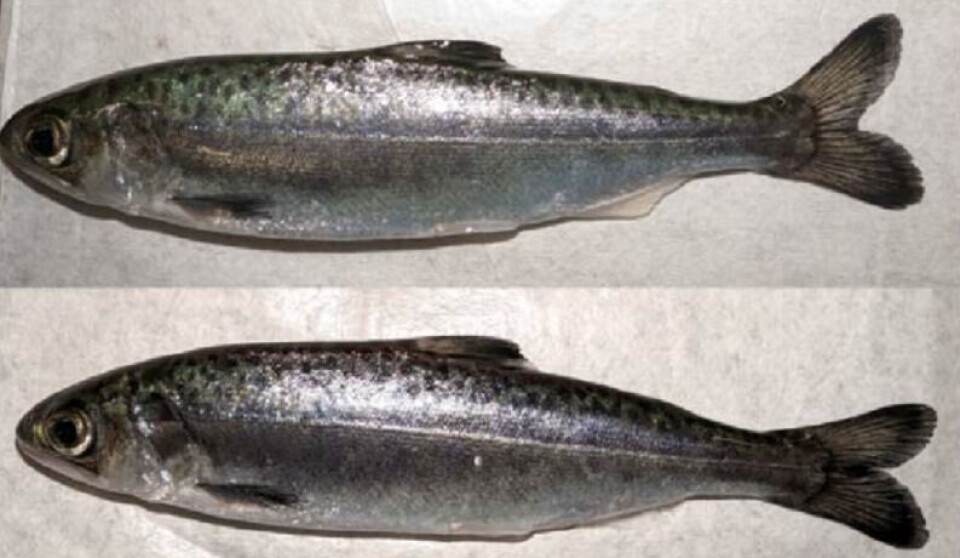
Scientific papers 'dispel myth' that fish farms harm wild salmon
British Columbia producers urge federal government to ditch net pen closure plans as evidence for co-existence of species stacks up
Two new peer-reviewed scientific studies focused on disease transfer and sea lice infestation further dispel the myth that salmon farms in British Columbia harm wild Pacific salmon, the province’s fish farmers have said.
Trade body the BC Salmon Farmers Assiciation (BCSFA) said the papers reinforce a growing body of scientific evidence that supports the coexistence of wild and farm-raised salmon.
Recently published in the journal Aquaculture Research, a study titled “Tenacibaculosis Caused by Tenacibaculum maritimum Is Not Transmitted From Atlantic Salmon (Salmo salar L.) to Canadian Chinook Salmon (Oncorhynchus tshaqytscha W.) in a Cohabitation Model” examined whether tenacibaculosis, commonly referred to as mouthrot, in farm-raised Atlantic salmon can be transmitted to Chinook salmon through cohabitation.
The study concluded that Chinook salmon cohabitating with infected farm-raised Atlantic salmon showed no illness or mortality, even when exposed to high pathogen concentrations. This marks the first interspecific transmission study of its kind in Canada, directly addressing public concerns about disease transfer between farm-raised and wild salmon.
Sea lice prevalence
An additional paper, recently published in Scientific Data by Nature titled “Sea lice infestation dataset for wild and farmed salmon populations on the Pacific coast of Canada (2001-2023)”, provides the most comprehensive sea lice dataset compiled for British Columbia’s coast, covering more than two decades of monitoring across nearly 100 farm sites and more than 365,000 wild fish.
The study highlights the variability in sea lice prevalence (percentage of fish with sea lice) across regions and years, and cautions against drawing sweeping conclusions based on limited or localised data, which has often distorted public perception and influenced policy.

Growing evidence
“These studies add to a growing and increasingly rigorous body of scientific evidence concluding that salmon farms in BC do not harm wild salmon populations,” said BCSFA executive director Brian Kingzett. “Four major peer-reviewed studies have emerged this year alone, reaffirming this conclusion.”
In April, a paper published in the Journal of Fish Diseases dismissed the widely repeated claim that removing salmon farms results in lower sea lice numbers on wild Pacific salmon.
Then, in July, another paper in Aquaculture, Fish, and Fisheries reviewed 20 years of scientific publications to conclude that salmon farms in British Columbia pose minimal impact on wild salmon populations, with no solid evidence of long-term impacts.
An additional publication is also forthcoming. The abstract, published in Diseases of Aquatic Organisms, previews the upcoming paper “Trends in sea lice infestations on chum salmon (Oncorhynchus keta) and pink salmon (O.gorbuscha) in the Broughton Archipelago, British Columbia remain unchanged despite removal of finfish aquaculture”.
In April 2024, the BC Salmon Farmers Association, in partnership with the Coalition of First Nations for Finfish Stewardship and the BC Centre for Aquatic Health Sciences, released a comprehensive 500-page science review titled “Modern Salmon Farming in British Columbia”. The report includes contributions and data from First Nations, Pacific Ocean scientists, the fish farming sector, subject matter experts, government and environmental NGOs.
A baseless policy
Canada’s Liberal federal government has so far not moved away from a policy announced last year that open net pen salmon farming in BC must be phased out by mid-2029. But the salmon sector still has hopes that Justin Trudeau’s replacement as prime minister by the more business-focused Mark Carney could move the dial in its favour.
“With the 2029 marine net-pen ban on BC salmon farms approaching, we respectfully urge the federal government to reconsider this decision,” said Kingzett. “This policy, initiated under the previous Trudeau administration, is not supported by science and will significantly impact coastal communities and Canadian food security.”
The current ban on marine net-pens by 2029 risks CAD 9 billion (£4.9bn) in taxpayer costs and significant economic losses to Canada, says the BCSFA. Under a renewed, responsible, Indigenous-led plan, the sector could generate CAD 2.5 billion in annual economic output and 9,000 jobs by 2030, and CAD 4.2 billion in annual economic output with over 16,000 jobs by 2040.






















































